Flight sims are one of the things that will grow on you as a player. When starting out it's hard to understand and get to know all the terminology, and why some people go for a 1:1 simpit of their favorite plane or spend a ridiculous amount of money on joysticks, throttles, and rudders. Some even go completely nuts and rebuild entire rooms in their house to fit their simpits to make it feel exactly like the real deal.
In this article, I will give my take on what peripherals are good for what, and why.
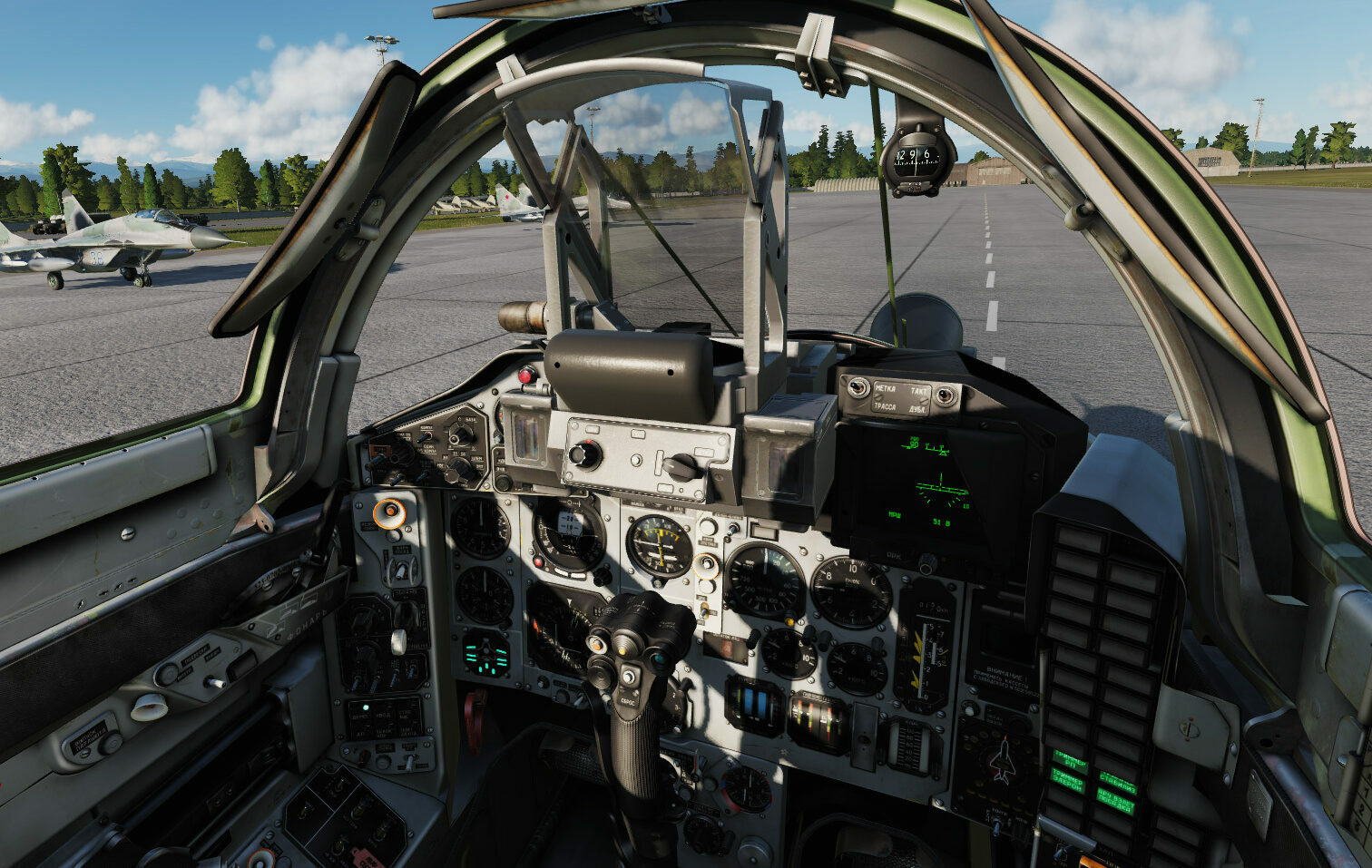
Image by Eagle Dynamics
Space, or earth?
Whats the difference?
Usually, there are two types of games that make you want to get yourself "a joystick". Either a space sim like Elite Dangerous or Star Citizen, or a good traditional Fighter plane simulator like War Thunder, DCS, or Project Wingman. A third option that kind of is a spin on the space sim genre is a 6DOF (Degrees of freedom) shooters like Descent, Overload, and Elite Dangerous.
Does it matter what joystick you use in this kind of game? I first thought not. But after playing these sorts of games on and off for about 5-6 years, and getting my hands on high-end equipment I can definitely say there is a difference in what you want to use and where you want to use it.
The main difference is that in space there is normally no atmosphere to consider. Because of this, you can generally thrust in any direction of your spacecraft without having to consider aerodynamics. You just have to compensate for your current velocity vector. Typically a spacecraft is designed to go forward, the same way the pilot is facing, but you don't really have to. A plane on earth with an atmosphere and gravity, on the other hand, will only go forward.
Why does this matter? In space, it's natural to use the thrusters to freely move in any direction. When playing Elite Dangerous this can be used to your advantage, you simply thrust towards an enemy, then disable flight assist, so that you can angle your spacecraft towards the enemy spacecraft and fire away while still maintaining the same velocity vector. This makes it natural to smoothly transition the joystick from a roll to a pitch (up/down) and yaw (left-right). Because of this a joystick with a hard center or felt change in axis will feel wrong in your hands.
When flying a military plane in an atmosphere and with gravity, it's nice to "feel" when you change when you transition the stick from a pitch to a roll. Yaw rotation is nowhere as efficient on earth as it is in space because of the way the air acts on plane aerodynamics. Because of this, a joystick that has a hard center that you can feel is the best option for planes.
The good news is that a beginner or novice joystick pilot will typically not notice this too much. Just buy a joystick and try it out. Any stick with 3 axes that cost less than 100 $/£/€ will be good enough to get started. I would argue that a more expensive stick will give you a bad experience in the beginning simply because you typically end up with a simulator-style stick with a hard center that will feel very unnatural if you have only played with analog sticks on your Xbox or PlayStation gamepad before trying flight sticks for the first time.
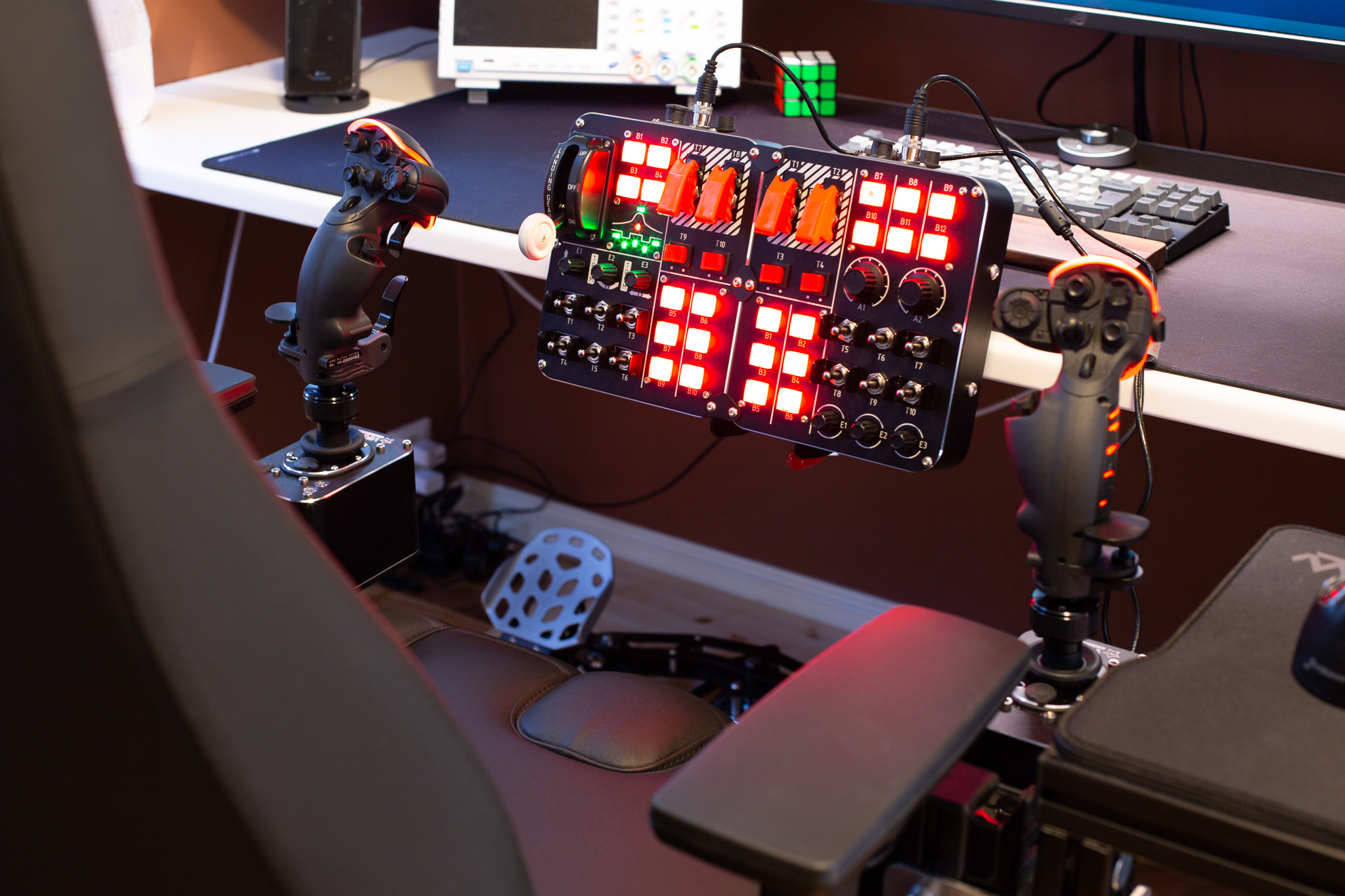
HOSAS setup - Image © Stanley Skarshaug
Space sticks
HOTAS or HOSAS?
Because of the mentioned ability to fly and rotate in any direction, it's very natural that you want to use a joystick for all axis of movement, and a joystick for all axis of rotation on your spacecraft. Because of this, a HOSAS (Hands-on Stick and Stick) is very popular.
Typically you will want your rotations on the right hand, and the movement on your left hand.
The exception to this rule is games where you want to have a forward thrust set and slowly changed. The foremost example is Elite Dangerous where you can go at full speed throughout a solar system for 5-10 minutes. Having to push the left joystick forward for all that time is tedious and uncomfortable. Because of this, I would recommend a HOTAS (Hands-on Throttle and Stick) setup where you control the rotation of your spacecraft with a right-hand joystick, and the thrust on the left-hand throttle. Ideally, you want an analog joystick on your throttle to engage lateral and vertical thrusters on your spaceship.
For Elite Dangerous I would highly recommend the Thrustmaster TWCS throttle and the Thrustmaster 16000M Flightstick as an excellent starter kit. I simply love the way the throttle moves along an axis instead of a forward but rotational movement that is normal in most other throttles. This feels very natural and is easy to get used to. The only problem I have with this throttle is that it has no center bump that makes you feel that the stick is in the center position. This forces you to either modify the throttle by adding a magnet or using a toggle button to swap between forward and backward trust.
The 16000M Flightstick has a defined center in both x and y directions, but once you have pushed the joystick out of the center/center position the stick will no longer have a felt center on any of the axis. This is perfect for pitch (up-down rotation) and roll (left-right rotation) in space sims. The 16000M also has a twist axis that is ideal for yaw (left-right turning).
For 6DOF games like Overload, I will simply use two Thrustmaster 16000M Flightstick. These are ambidextrous, meaning they can be used in both hands. You simply move the hand support and swap out the thumb support to the other side. The joysticks are very comfortable and will give you a very good experience with a relatively small investment.
To up your controller game, I would recommend investing in a set of rudder pedals. Again Thrustmaster offers a nice beginner rudder that is cheap and good enough for most beginners. Many prefer using the right-hand twist as yaw, but once you learn to use the rudder pedals, it's hard to go back to using twist because you will not get as tired in your forearm, and it feels a bit more precise. Another benefit is that when the twist axis is locked on the joystick, it feels a lot more precise when pitching and rolling your spaceship or plane.
Helicopter sticks
Helicopters are controlled a bit differently compared to normal flight sims, this is because helicopters are controlled by adjusting the angle of the main rotor blades. Because of this helicopter joysticks do not have a spring that centers them when released.
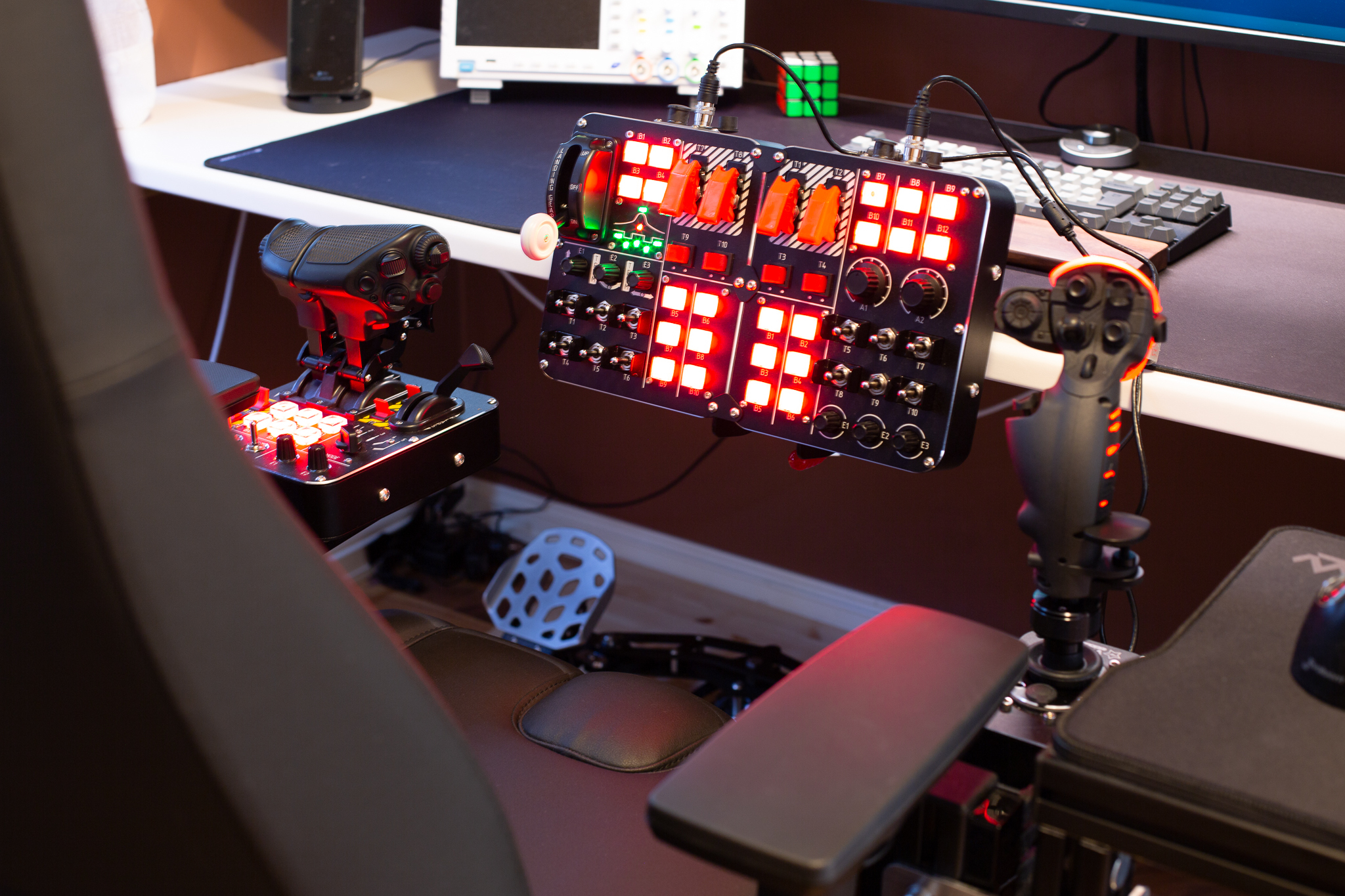
HOTAS setup - Image © Stanley Skarshaug
Image © Stanley Skarshaug
Plane sticks
HOTAS with feelings
As mentioned earlier, Planes do not fly like spaceships. You will mainly use roll and pitch to control your plain, and yaw to slightly change the heading.
This makes it beneficial to feel when you add pitch to your roll when changing the direction of your plane. A set of flight sticks with a felt change in direction on both the pitch and roll axis is what you want. I think the VKG Gladiator NXT in your right hand is an excellent beginner joystick for your HOTAS setup. It even uses damping grease to make the return to the center position feel smooth. It's a bit more pricey compared to Thrustmaster sticks, but in addition to a felt change of axis, you will get a lot more buttons that can be used to bind your controller to actions in-game.
For the throttle, I would still recommend the Thrustmaster TWCS throttle for beginners. It's relatively cheap, has a lot of buttons and hats, and feels very comfortable to use.
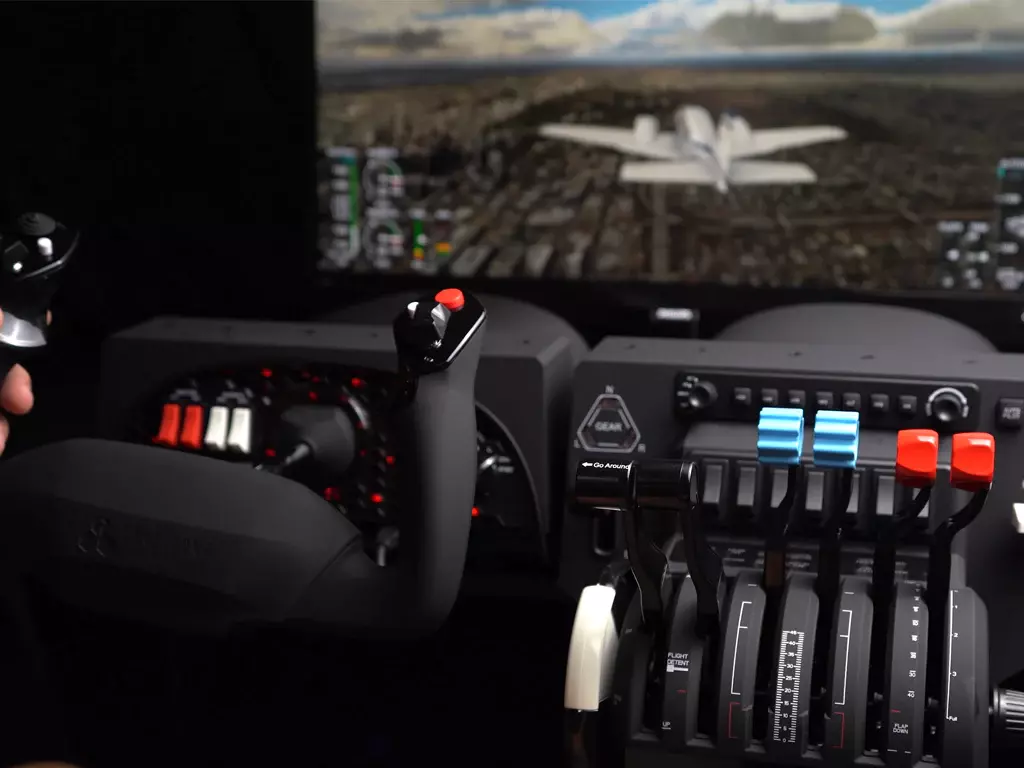
Image by Honeycomb Aeronautical
Image by Honeycomb Aeronautical
Yoke and throttle quadrant
For general avionics enthusiasts
Real airplanes used by private pilots often use a yoke instead of a joystick to control pitch and roll. The pitch is controlled by pushing or pulling on the yoke, and the roll is controlled by turning the yoke like the steering wheel on a car.
Rudder pedals
Control yaw with your feet
If you want to fly sideways, like an axe or knife through the air, you must compensate using a yaw to prevent the plane from falling toward the ground. You also have to compensate with yaw when making sharp turns in the air. This makes it very ideal to use a set of rudder pedals.
Again, the Thrustmaster rudder pedals provide an OK beginner choice if you don't want to use the twisting motion on a joystick for yaw. However, the problem with these pedals is that they are narrow and do not provide smooth axis movement. A set of broader and more solid rudder pedals will make it more comfortable to play for longer sessions. In my opinion, the Virpil rudder pedals offer the best experience for the price. Adding a damper to the pedals can change how heavy they feel to push, not only how hard they are pulled toward the center position. In some ways, they almost feel better than real airplane rudder pedals.
Most rudder pedals also feature toe breaks. Because you control the nose wheel of airplanes with the rudder pedals, they are set up so that you steer right by pushing your right foot forward and left by pushing your left foot forward. The right toe brake breaks the right wheel, and the left toe breaks the left wheel. If you have to perform a sharp right turn, press your right foot forward, then press the right to break down for a more aggressive turn.
Many sim enthusiasts forget to mention how hard it is to start using, and how much training is required to master rudder pedals. But trust me, once you have learned to use them, it feels like a handicap not to have a set of rudder pedals available when traveling through space or flying on Earth.
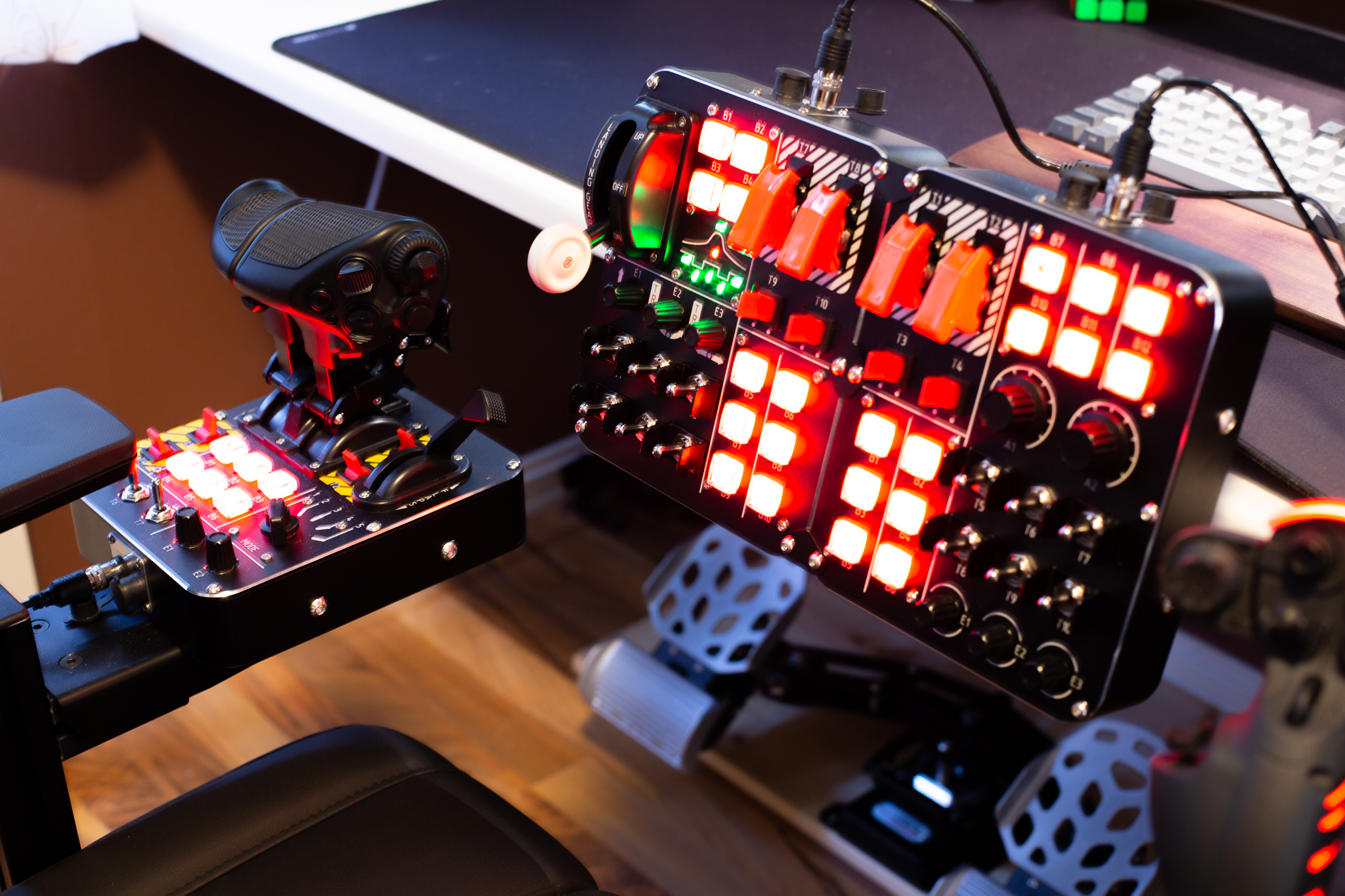
Button box - Image © Stanley Skarshaug
Button boxes
When you need to add even more keybindings.
Button boxes are used to add additional buttons to your setup. This is very useful if you want to add dedicated buttons and analog inputs to control part of your simpit.
A solid HOTAS or HOSAS setup will usually have enough buttons for most of your games. But for games that support multiple joysticks as inputs, it's fun to spread out all functions in-game to dedicated buttons instead of relying on button combinations to perform actions.
I personally don't really need all the buttons on my button boxes, but they are very nice to have for simulator-style games with many controllable inputs.
Premium equipment
When price is no issue, and you simply want the best.
If you have played a lot of flight sims you will at one point feel the lack of buttons on your joystick and throttle, and start looking for a better option. There are several options out on the market, but in my opinion, none is quite as premium as the equipment from Virpil Controls.
Their joysticks and joystick bases are simply amazing. But will require additional mounting solutions like mounts from monster tech to fit them on your chair, or to your table. The throttle from Virpil is in another league completely compared to anything. Just on the throttle handle you have 32 buttons to bind, plus a joystick and a single-axis slider. The Alpha joysticks also have 32 buttons to bind, making it hard to actually use all of them in most games and simulators.
The Virpil joystick bases offer the possibility to switch cams and springs, enabling you to use the same joystick comfortably in both spacecraft and plane simulators. It does take a few minutes to swap cams and springs, but in return, you will be able to use the expensive sticks for any game or simulator.
Virpils rudder pedals are also fantastic, sporting an all-metal construction that can be mounted on a piece of wood or to your simpit. I cannot recommend these enough if money is no issue. Once you get used to the rudder pedals it's very hard to go back to using the twist motion on the joystick handles.
But please keep in mind that a premium HOTAS + rudder is a substantial investment. I will not recommend anyone buying premium equipment if you are not an enthusiast that is certain that they will use the equipment for many, many hours, or even years.
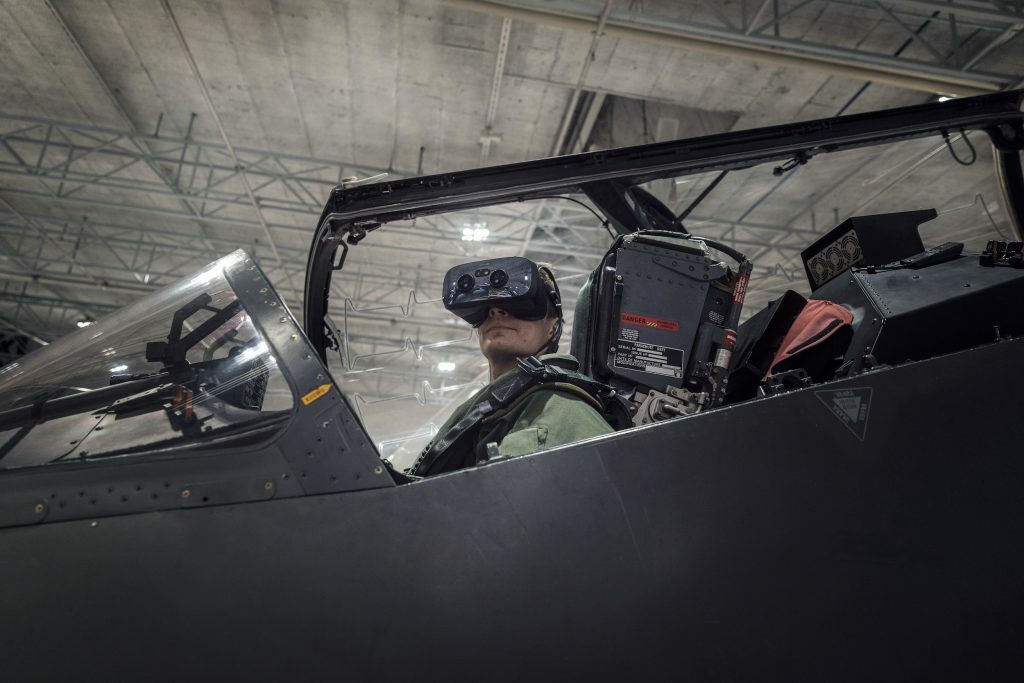
Image by Varjo
Virtual Reality
Feel like you sit inside the cockpit!
VR will give you a fantastic experience when flying both spacecraft and planes. A HOTAS or HOSAS setup will keep you immersed in the virtual world in a way that no monitor or multi-monitor setup will ever provide. In VR you will feel like you actually sit inside a spacecraft or plane.
Even though it's great, I would not recommend learning to fly in VR. It's simply too much to keep track of buttons to remember, and complexity to understand. The only exception is the amazing arcade-style flight game Project Wingman. This is in my opinion the perfect introduction game for beginners wanting to try out HOTAS on fighter jets in VR. The simple control layout and the unrealistic flight controls where you can turn impossibly fast are perfect for learning to fly. It's simply a lot of fun.
It goes without saying that when flying in VR it's essential to know your button and axis bindings so well that you can use them blindly. In VR you cant look down at your controllers to know what button to push.
In VR, a HOTAS setup with many key bindings on the throttle and joystick grip is the best option for VR gaming, because you can quickly learn where everything is located, and you don't lose immersion by blindly looking for buttons on the HOTAS bases or button boxes.
With joysticks and throttles that have few keybindings, you usually have to use button combinations to trigger certain functions in the game. But once you are used to this, it causes no issues.
Head tracking
A fantastic compromize!
Head tracking solutions are very popular, even among VR enthusiasts. The reason is that you can use all your cool button boxes and gadgets while still being able to look around the cockpit in-game semi-naturally.
The solution that is probably most supported and popular is TrackIR. The premium version features a clip that you attach to the side of your headset and illuminates three infrared LEDs. A high-speed webcam picks up those LEDs and tracks their position, and calculates their position in 3D space.
The head tracker software allows you to add multipliers as curves to any of these degrees of freedom, and the game that receives the signal from the head tracker will use this to move the in-game camera accordingly. A 10-degree look to the right, for example, would be multiplied to rotate the in-game camera 45 degrees, making it possible to look all around your cockpit, even behind you, while still looking at your monitor. This will initially feel strange, but once you get used to how it feels, it's hard to go back to playing without head tracking.